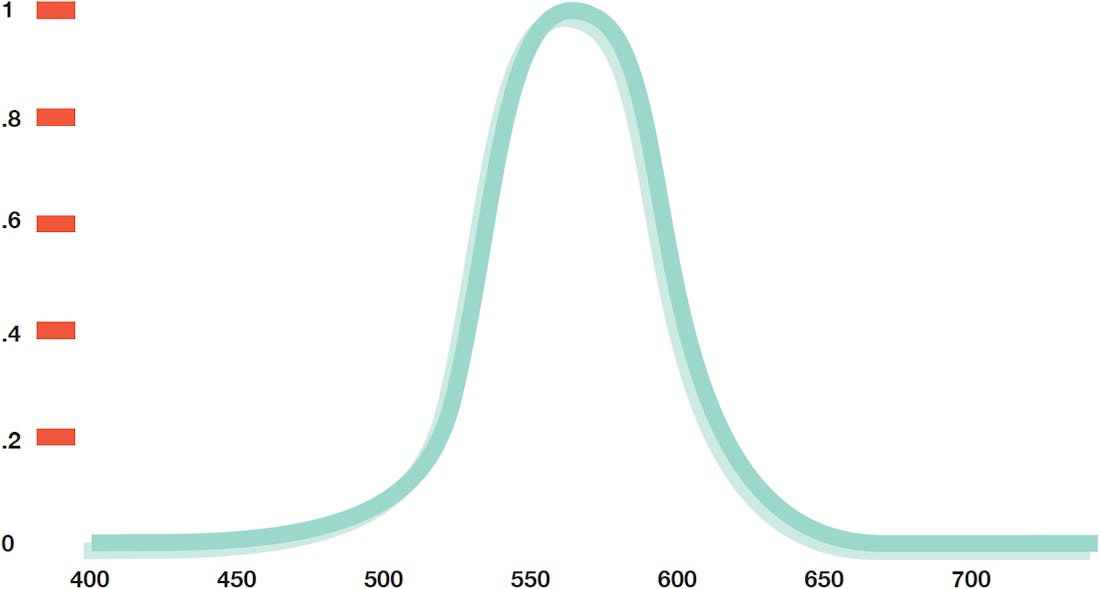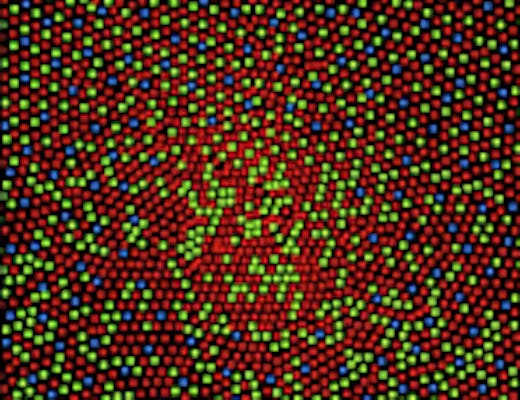What is the CIE Luminosity Function?
In 1924 the Commission Internationale de l’Eclairage (CIE) defined a general photopic spectral sensitivity function of the average human eye based on a number of experiments. This photopic sensitivity is based on the midrange of the visual spectrum known as the Vλ or ȳ(λ) luminosity function and the basic principle of the response of light meters.

The function graph below shows the human eye is not equally sensitive to light over the entire visual spectrum: the peak sensitivity is concentrated around 555nm. Later in 1931, this luminosity function was also applied as the Y function in the CIE 1931 XYZ color matching functions.
Under normal lighting conditions, for example during daytime, photopic vision dominates. Photopic vision is based on three types of cones which are sensitive to long, middle and short wavelength ranges which typically appear red, green and blue respectively to the human eye. In terms of light sensitivity cones are limited. Vision above 3 cd/m² is based on photopic vision which allows for good color discrimination. As light sources are typically used to illuminate dark environments and aim to provide good sight and possibly color discrimination, brightness of light sources is typically measured according to the response of the eye under these conditions.
Depending on the application for light measurement, quantification of a light source can be done in various ways. For example to determine the total output of a light source in all directions. This is typically measured using an integrating sphere and will provide data in lumen (lm). Also light measurement quantities such as luminous intensity in candela (cd) and light incident upon a surface (illuminance measured in lux) are based on the luminosity function.
Admesy’s light measurement equipment that includes light meters, colorimeters and spectroradiometers are capable of measuring light according to the luminosity function. The values measured by the device depend on the optics.
The Asteria series from Admesy is a high-speed luminance meter capable of measuring luminance (cd/m²) or illuminance (lux) and luminous intensity (cd) according to the CIE 1931 luminosity function with absolute accuracy. It is capable of integrated calculations for simple implementation into a range of production settings. Alike the Asteria, colorimeters including the Hyperion use optical filters to exactly match the luminosity function. Spectroradiometers use software processing to determine light quantities according to Vλ.
If you would like to hear more about our luminosity measurement products, please do not hesitate to contact us.

